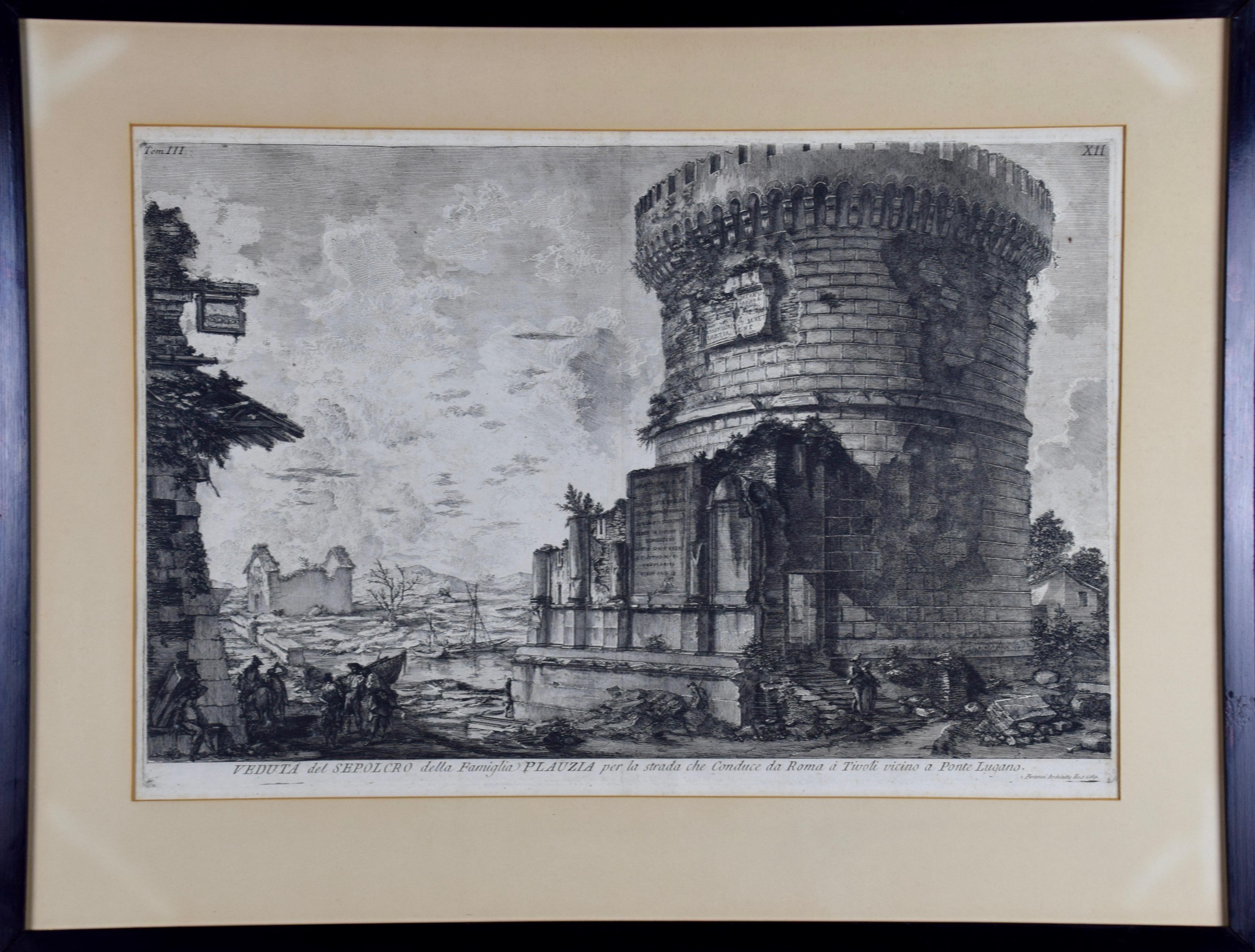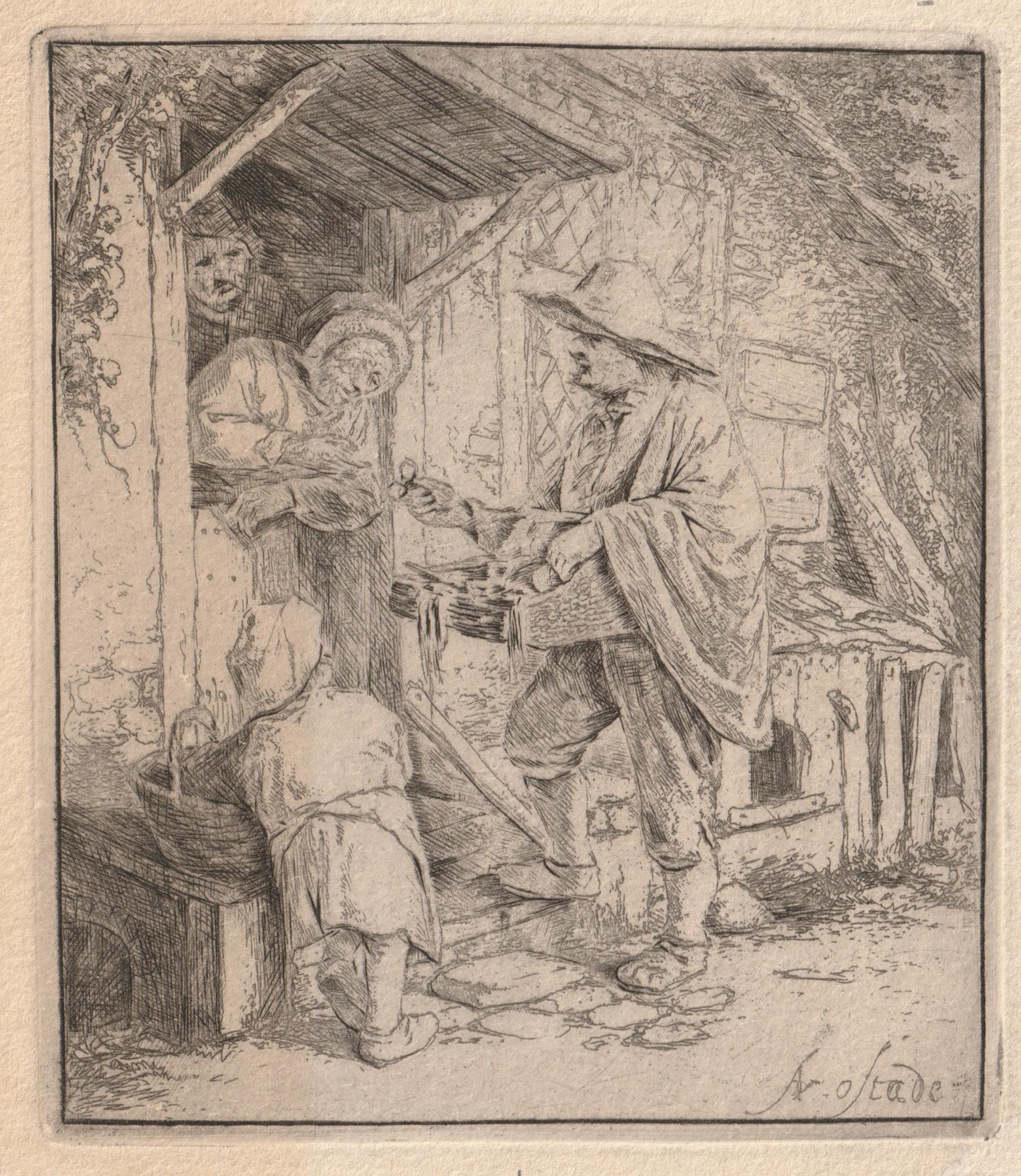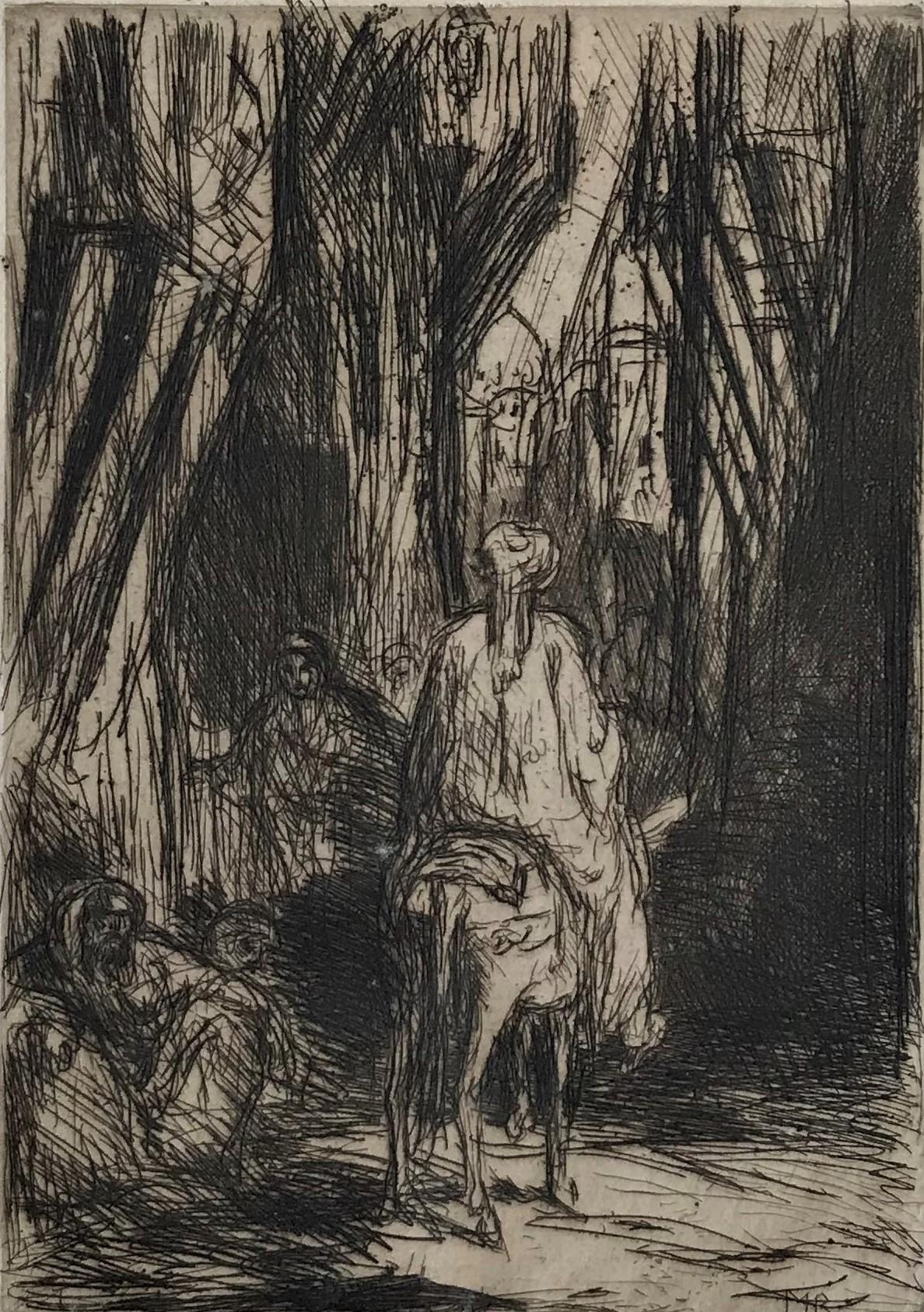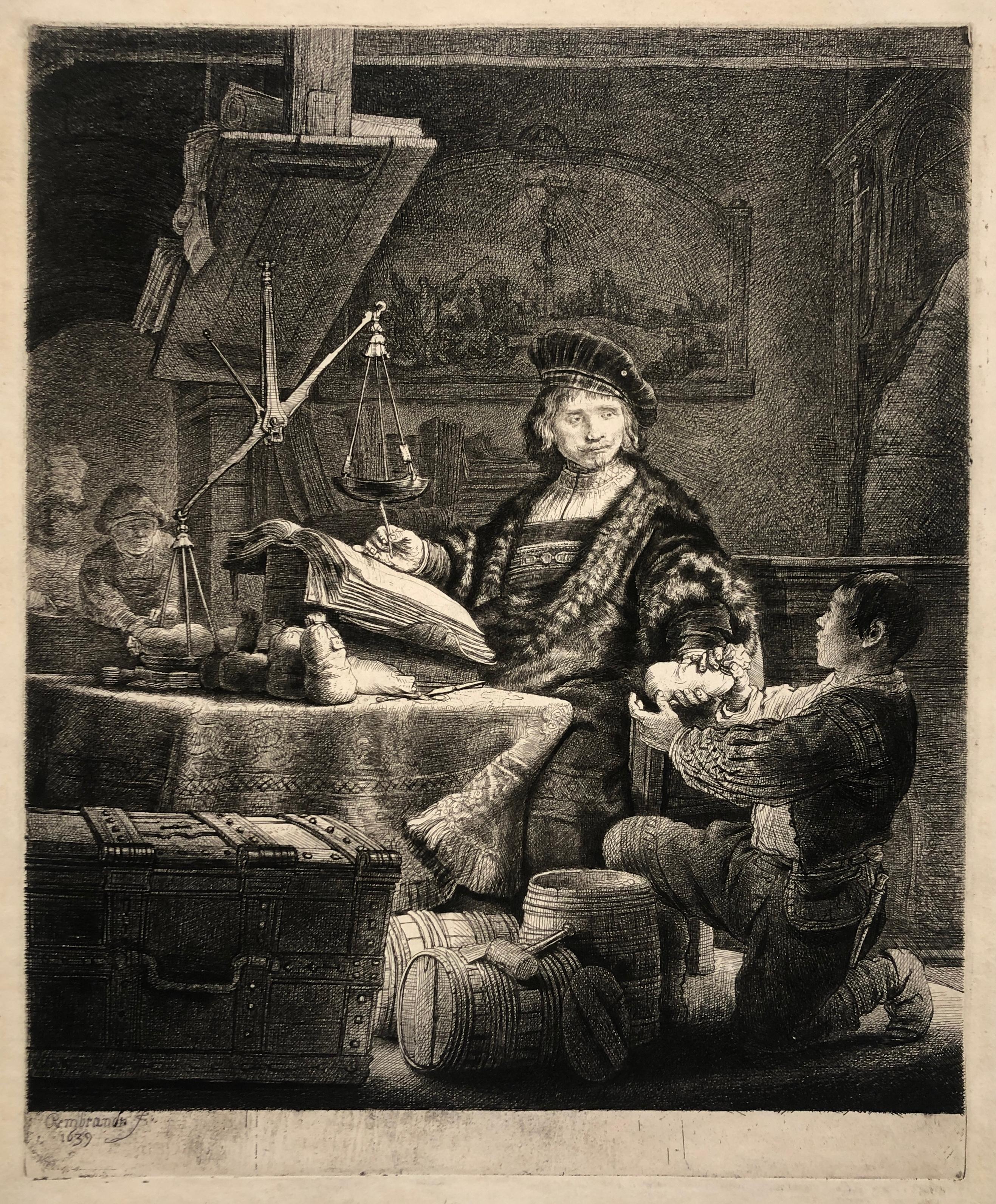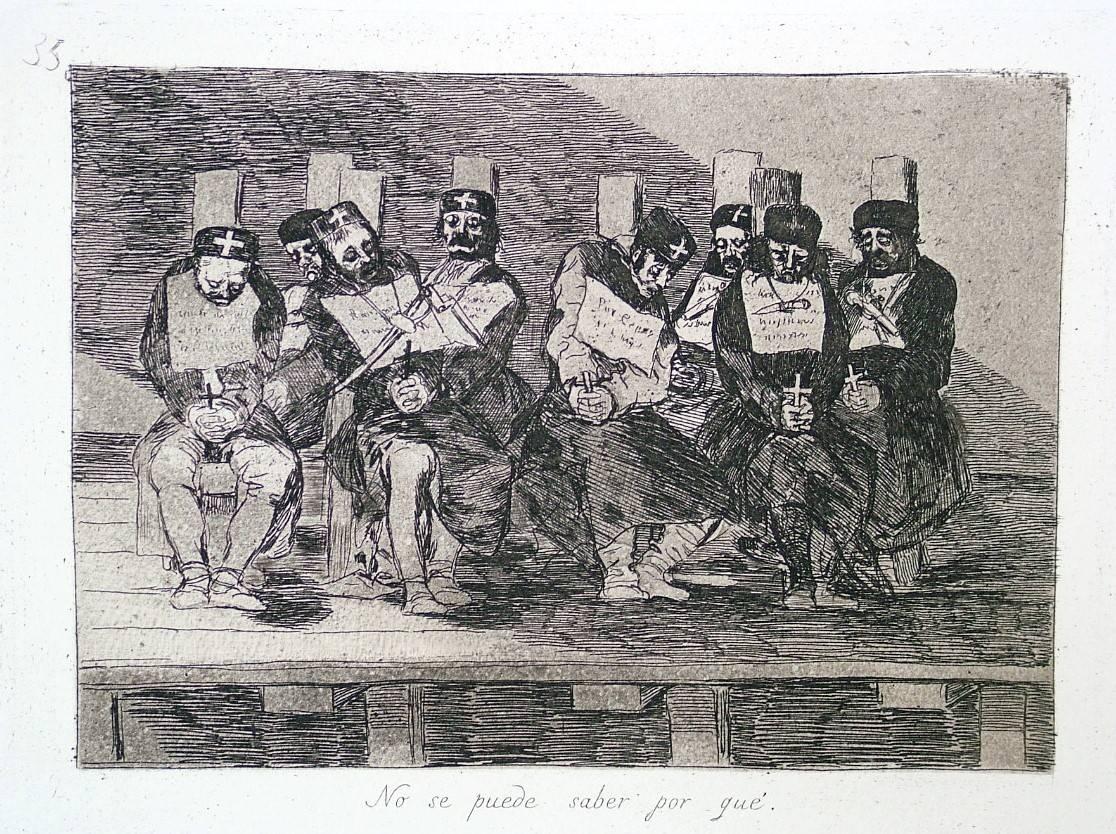Items Similar to Altra veduta del medesimo in prospettiva...
Want more images or videos?
Request additional images or videos from the seller
1 of 5
Giovanni Battista PiranesiAltra veduta del medesimo in prospettiva...1778
1778
About the Item
Title : Altra veduta del medesimo in prospettiva, fra una lampada e un piccolo vaso in bronzo
Artist proof, with a good contrast and sharp details, printed on antique laid paper, large margins, representing an “antique marble altar discovered in Villa Adriana’s ruins, in Tivoli”, (the place is today called Pantanello), a bronze vase and an antique bronze lantern, “discovered in the Ancient Vejo”. The piece is dedicated to “Madam Eliza Upton, English Lady, conoisseur of every kind of Liberal Arts”. Signed on plate “Cav. Piranesi F.” on lower left. Excellent conditions, with some stains and foxing, some tiny marks, higher and lower margins lightly damaged.
Image Dimensions : 45 x 50.5 cm
Undoubtedly Piranesi was one of the most important engravers in 18th century even if he was well-known as an architect and an archaeologist: the greatest engraver in the period from Rembrandt a Goya. The generations after him have continued to imagine the Ancient Rome as the artist has portrayed his magnificent in "Vedute".
References:
L. FICACCI, Piranesi, The Complete Etchings, Taschen, p.603, fig. 762.
A.A.V.V., Giovanni Battista Piranesi, Architetture, fantasie e grotteschi, Antichità Romane, Catalogo 24, Antiquarius, p. 72
This artwork is shipped from Italy. Under existing legislation, any artwork in Italy created over 70 years ago by an artist who has died requires a licence for export regardless of the work’s market price. The shipping may require additional handling days to require the licence according to the final destination of the artwork.
- Creator:Giovanni Battista Piranesi (1720-1778, Italian)
- Creation Year:1778
- Dimensions:Height: 22.84 in (58 cm)Width: 31.3 in (79.5 cm)Depth: 0.08 in (2 mm)
- Medium:
- Movement & Style:
- Period:1770-1779
- Condition:Insurance may be requested by customers as additional service, contact us for more information.
- Gallery Location:Roma, IT
- Reference Number:
About the Seller
4.9
Platinum Seller
These expertly vetted sellers are 1stDibs' most experienced sellers and are rated highest by our customers.
1stDibs seller since 2017
6,717 sales on 1stDibs
Typical response time: 2 hours
- ShippingRetrieving quote...Ships From: Rome, Italy
- Return PolicyA return for this item may be initiated within 14 days of delivery.
More From This SellerView All
- The Sacrifice of IphigeniaBy Nicolas BeatrizetLocated in Roma, ITBlack and white etching and drypoint on wire rod paper, representing the myth of the sacrifice of Iphigenia. On the altar is inscribed "Iphigenia" in capital letters. On the lower left margin is inscribed "N. Beatrizet Lo Taringus F.", slightly discolored (Beatrizet usually signed his plates with the letters "N. B. L. F."). At the center of the lower margin is inscribed "Romae, Michaelis Tramezini formis cum privilegio summi Pont. M.D.L.III". After a drawing attributed to either Michelangelo Buonarroti, Salviati, or Baccio Bandinelli...Category
16th Century Old Masters Figurative Prints
MaterialsDrypoint, Etching
- Study of Five Heads - Original Etching by J.-J. BoissieuBy Jean-Jacques de BoissieuLocated in Roma, ITStudy of Five Heads is a beautiful black and white etching with drypoint interventions on paper, realized at the end of XVIII century by the French artist Jean-Jacques de Boissieu (Lyon, 1736- 1810). Five study of heads of which two profiles (a female and a male) are lightly sketched with the drypoint technique, and we could appreciate the incredible draftsmanship. Instead, the bigger three portraits are very detailed and etched with a superb technique. Although the subjects are drawn in different scales and with different degrees of finish, each portrait has the dignity of a unique piece and the composition is very balanced. In particular on the lower margin at the center there is the portrait of "Le Père Cotrot, Garçon Teinturier à Lyon'", an elderly man, toothless and with a large-nosed, slightly turned to left, with a hat and unbuttoned jacket over waistcoat, shows all his wrinkles in a very realistic way. Signed on plate on lower right margin “De Boissieu”. This old master’s original print with fresh impressions, is in very good conditions, except for a usual yellowing of the paper above all on the edges and some signs of the time and light foxing along the margins, do not affect the image. Jean-Jacques de Boissieu (Lyon,1736 –1810) Jean-Jacques de Boissieu was a French artist studied at the École de Dessin in Lyon, but he was mostly self-taught. His first prints were realized between 1758–64. When he went to Italy in the retinue of the ambassador and Duc de la Rochefoucauld d’Enville, he had the lifechanging encounter: he met Voltaire and he entered in the world of luminaries, he had the opportunity of realizing some plates for the Diderot-d’Alembert’s Encyclopèdie. Then he continued to produce prints in Lyon, Boissieu made many etchings of the Roman and Dutch countryside, as well as the French countryside around Lyon, which earned him a reputation as the last representative of the older etching...Category
Late 18th Century Old Masters Animal Prints
MaterialsDrypoint, Etching
- Study of Six Heads - Etching by J.-J. BoissieuBy Jean-Jacques de BoissieuLocated in Roma, ITStudy of Six Heads is a beautiful black and white etching with drypoint interventions on paper, realized at the end of XVIII century by the French artist Jean-Jacques de Boissieu (Lyon, 1736- 1810). Six study od heads ( four elder men, a middle-aged man at the center, and a woman with turbant) etched with a superb technique and an incredible draftsmanship are drawn to different scales and with different degrees of finish, have the dignity of six different portraits with the same passion and effort. Signed on plate on lower right margin “De Boissieu”. Inscription ( number plate) on higher-right corner "10". This old master’s original print with lifetime impressions, is in very good conditions, except for a usual yellowing of the paper above all on the edges and some signs of the time,do not affect the image. Jean-Jacques de Boissieu (Lyon,1736 –1810) Jean-Jacques de Boissieu was a French artist studied at the École de Dessin in Lyon, but he was mostly self-taught. His first prints were realized between 1758–64. When he went to Italy in the retinue of the ambassador and Duc de la Rochefoucauld d’Enville, he had the lifechanging encounter: he met Voltaire and he entered in the world of luminaries, he had the opportunity of realizing some plates for the Diderot-d’Alembert’s Encyclopèdie. Then he continued to produce prints in Lyon, Boissieu made many etchings of the Roman and Dutch countryside, as well as the French countryside around Lyon, which earned him a reputation as the last representative of the older etching...Category
Late 18th Century Old Masters Animal Prints
MaterialsEtching, Drypoint
- Small Gray Landscape - Engraving after Rembrandt - 19th CenturyBy Charles Amand DurandLocated in Roma, ITSmall Gray Landscape: a House and Trees beside a Pool is an engraving on ivory-colored paper realized by Charles Amand Durand (1831-1905) after an etching by Rembrandt. This piece of...Category
19th Century Old Masters Figurative Prints
MaterialsEngraving
- The Artist's Mother with Her Hand - Engraving after Rembrandt - 19th CenturyBy Charles Amand DurandLocated in Roma, ITThe Artist's Mother with Her Hand on Her Chest is an engraving on ivory-colored paper realized by Charles Amand Durand (1831-1905) after an etching by Rembrandt. This piece of art be...Category
19th Century Old Masters Figurative Prints
MaterialsEngraving
- The Monk in the Cornfield - Engraving after Rembrandt - 19th CenturyBy Charles Amand DurandLocated in Roma, ITThe Monk in the Cornfield is an engraving on ivory-colored paper realized by Charles Amand Durand (1831-1905) after an etching by Rembrandt. This piece of art belongs to a late editi...Category
19th Century Old Masters Figurative Prints
MaterialsEngraving
You May Also Like
- Giovanni Piranesi Etching of Ancient Roman Architecture, 18th CenturyBy Giovanni Battista PiranesiLocated in Alamo, CA"Veduta del Sepolcro della Famiglia Plauzia per la Strada Che Conduce da Roma a Tivoli vicino a Ponte Lugano" from "Le Antichità Romane" (Roman Antiquities), one of the most famous works by Piranesi. "Antichita" illustrates the tombs along the Appian Way...Category
Early 18th Century Old Masters Figurative Prints
MaterialsEtching, Engraving, Drypoint
- The Spectacle SellerBy Adriaen Jansz van OstadeLocated in Middletown, NYEtching and drypoint on cream laid paper, 4 x 3 3/8 inches (102 x 86 mm), 1/4 inch margins. Signed in the plate, lower left corner. The 3rd state (of 6), after the rounding of the pl...Category
Mid-17th Century Old Masters Figurative Prints
MaterialsEtching, Laid Paper, Drypoint
- Street in SmyrnaBy Marius BauerLocated in Storrs, CTStreet in Smyrna. 1889. Etching. Wisselingh 34. 7 x 5 1/4 (sheet 12 7/8 x 8 7/8).Edition 100, number 49. A rich, tonal impression printed on Strasbourg cream laid paper on the full s...Category
Late 19th Century Old Masters Figurative Prints
MaterialsDrypoint, Etching
- Breaking up of the Agamemnon, No 1By Sir Francis Seymour Haden, R.A.Located in Storrs, CTEtching and drypoint. Schneiderman 133.v/xi. 7 3/4 x 16 3/8 (sheet 9 1/4 x 17 1/2). A rich impression with plate tone printed in black/brown in on antique cream wove paper. Signed in...Category
Mid-19th Century Old Masters Landscape Prints
MaterialsDrypoint, Etching
- Jan Uytenbogaert, The GoldweigherBy Rembrandt van RijnLocated in Boston, MABartsch 281, Hind 167 iii/III, Nowell-Usticke 281, iii/III. A fine impression, with burr, as retouched by Baillie in 1792. With an unidentified collectors stamp, verso.Category
17th Century Old Masters Figurative Prints
MaterialsDrypoint, Etching
- One Can't Tell Why - Proof from the Disasters of WarBy Francisco GoyaLocated in New York, NYFrancisco José de Goya y Lucientes (1746 Fuendetodos – Bordeaux 1828), No se puede saber por qué – One can’t tell why ca. 1808–1814, etching, burnished aquatint, drypoint, an...Category
1810s Old Masters Figurative Prints
MaterialsDrypoint, Etching, Aquatint
Recently Viewed
View AllMore Ways To Browse
Old Antique Lantern
Antique Old Lanterns
Old Antique Lanterns
Antique Italian Old Masters
Piranesi Giovanni
Piranesi Giovanni Battista
Piranesi Rome
Lady Dior Gray
Antique Ships Lantern
Antique Ship Lantern
Antique Lantern Ship
Antique Italian Altar
Old Ship Lantern
Giovanni Battista Piranesi Etchings
English Altar
Fig Print
Bronze Fox
Large English Lantern
